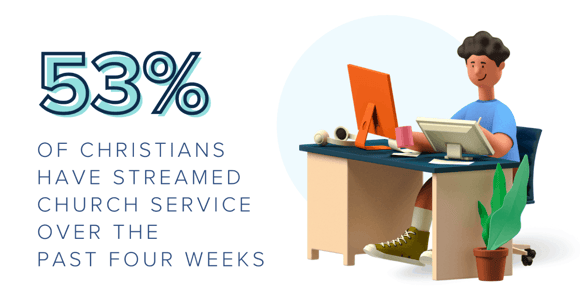Five centuries ago, Martin Luther historically presented the 95 theses, leading to the Protestant Reformation. What often goes unnoticed, however, is the role technology played in delivering those writings on a global scale. Less than two months after his original publication of the 95 theses, copies were being circulated in Switzerland, some 500 miles from the Castle Church in Wittenberg where the theses had been nailed to the door. In modern-day terms, the 95 theses had gone viral!
Johannes Guttenberg’s printing press technology revolutionized the way information was disseminated and permanently altered society. Without the technology found in the printing press, who knows the impact, or lack thereof, that Martin Luther’s writings would have had.

From the printing press to the beginning of televangelism in 1961 on Christian Broadcasting Network, to the launch of YouVersion in the app store in 2008; technology remains one of the greatest tools the church has to reach people both locally and globally.
And, now, perhaps more than ever, technology is shaping how we interact with members and non-members of our churches.
According to Barna, over half (53%) of Christians have streamed their church service over the past four weeks. And, another 34 percent admit to streaming a different church or digitally church-hopping.

Why is going digital important to your congregation?
Your congregation has grown accustomed to church online but in doing so is losing the important connections that make a community of believers stronger.
You know that nothing can take the place of being in a room full of fellow believers however, typical member engagements such as a membership class, baptism, tithing, and small groups look different since the pandemic. People are continuing to interact with church online which gives you an opportunity to expand your reach and deepen connections.
You can increase engagement with members and non-members alike through technology. And, you can do so by doing more than streaming church services online.
Here are 3 areas where we know technology can be leveraged to support your church's unique vision and mission.
1. More frequent, meaningful connections with your congregation
Whether you are using a mobile or web application, custom software can be an amazing tool to create micro touch moments for your members between the Sunday experience. Personally, I am not sure there is anyone doing that better than Judah Smith’s, Churchome. I encourage you to take a look at their app and gain inspiration for various ways you could leverage a custom app to engage with members.
Examples of what frequent, meaningful connections can look like for a congregation:
- A prayer feature that allows your members to engage in realtime with prayer requests
- Catered content based on areas you are struggling in or wanting to grow
- Daily video and text devotions allowing you to see a smiling face
- Chat live with a pastor or church leader
- Chat live with other church members in a 24/7 lobby experience
2. Increased interaction with the Bible
I think we all have moments where reading the Bible can feel overwhelming. Where do I start? How much do I read? And how often do you finish your reading only to feel you don’t understand it as well as you’d like. With amazing organizations like YouVersion and The Bible Project leveraging technology, there are so many creative ways you can build features into your church's current technology that gives members more confidence and ultimately more enjoyment when reading their Bible.
Examples of what increased interaction can look like for a congregation:
- Devotions following your Sunday message
- Deep dives into specific books that bring church history and culture context into studying
- Seasonal devotionals based on someone's season of life, or the time of year

3. Utilization of data that brings a greater understanding of the needs in your church
As a ministry and church leader, you are constantly having to make decisions that dictate the pace and direction of your organization. Clear and accurate data is the best way to make those decisions well, and technology can be an amazing way to gather that data.
The days of people filling out a weekly connection card are slowly fading, and when privacy is respected, people are more willing to allow their information to be tracked than they have ever been. Leveraging a custom application, that authenticates users, and lets you better observe their engagement and steps could be a monumental feature in defining where to use resources, what to speak on, and how to lead your church.
Interested to learn more? Watch our webinar!
At Airship, we work with some of the largest churches in America, partnering with them to support their efforts to engage with their members by leveraging technology.
We understand the importance of interacting online and giving people micro-interactions that join together to form connections and a community.
On Wednesday, June 30th, we hosted a webinar where we worked through the development of a problem statement around how to disciple and shepherd people via technology.
Some of the topics covered include:
- Understanding what is discipleship and what does digital discipleship mean
- Who are the users? What does the generational makeup of your congregation mean to how you use technology
- How do we interact online?
- Where are they using technology?
- And, are they engaging via mobile or desktop?
In addition, we covered in greater detail and give real-life examples of the 3 ways we know you can use technology to digitally disciple and leverage technology with your membership.
Click here to view the recording and download the worksheet.


